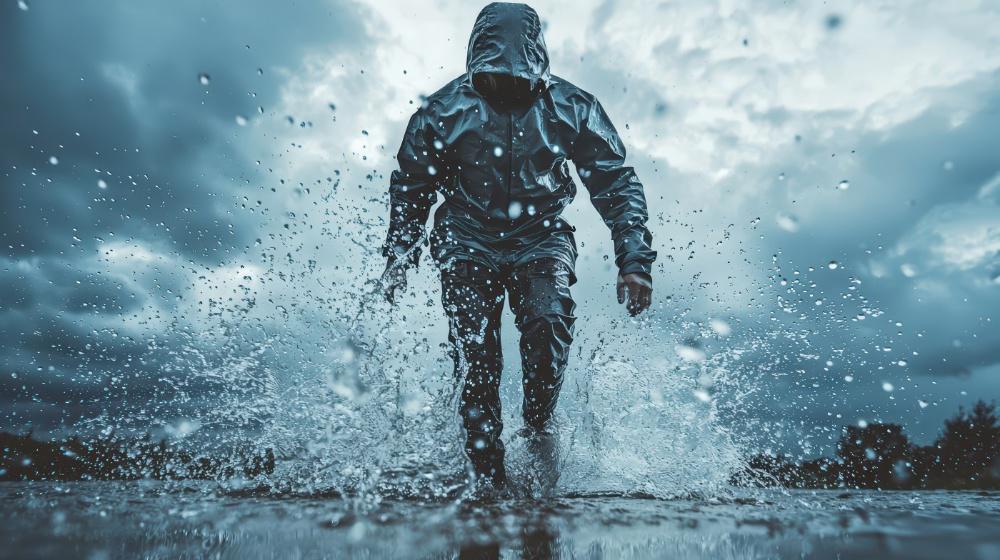new
what’s new
Features & Functions
Brands
Colors
wishlist


The growing popularity of light outdoor activities — such as hiking, camping, and cycling — has created strong demand for technical gear. Thanks to their waterproof, windproof, and abrasion-resistant features, shell jackets have become essential items.
What’s more, shell jackets have expanded beyond their original purpose in outdoor sports to suit everyday scenarios like commuting and travel. For example, a 3-in-1 shell jacket can handle a wide temperature range from -5°C to 15°C, making it perfect for office, school, or transitional seasons.
Originally designed for extreme sports like mountaineering and skiing, shell jackets stand out for their triple-protection: windproofing, waterproofing, and breathability.
Modern shell jackets are made with high-tech fabrics like GORE-TEX, which keep out wind and rain while allowing sweat to escape — keeping the wearer dry and comfortable. This perfectly aligns with the demands of modern life:
A single shell jacket offers versatile protection in all these situations — making it a cost-effective and reliable choice.
Compared to traditional outerwear, shell jackets are noticeably lightweight and often designed to be foldable — easy to pack into a backpack or even a pocket.
For commuters, business travelers, and minimalists, this portability is a major plus. In an era where “light living” is a growing trend, people prefer to carry less and move freely. Shell jackets meet this need by offering grab-and-go convenience that fits today’s fast-paced lifestyle.
Shell jackets used to be dismissed as “too technical” or “not fashionable enough.” But in recent years, major outdoor brands — such as Arc’teryx, Patagonia, and The North Face — have collaborated with designers to release a wave of stylish and trend-forward pieces.
Gone are the days of neon colors and oversized cuts. Now, shell jackets come in minimalist designs, neutral tones, and options like removable liners — even becoming the centerpieces of hype streetwear collaborations.
Social media, along with endorsements from celebrities and influencers, has further fueled the fashion appeal of shell jackets, helping them break out of the outdoor niche and into everyday wardrobes.
Consumers are increasingly concerned about the environmental impact of their clothing choices. Compared to fast fashion, outdoor brands typically emphasize durability and sustainable production.
A high-quality shell jacket can last for years, promoting a “buy less, choose better” mindset — a perfect fit for today’s values around waste reduction and conscious consumption.
The popularity of shell jackets isn’t a coincidence — it’s the result of a powerful combination of functionality, practicality, style, and values.
Shell jackets not only fulfill modern demands for comfort and efficiency but also align with the growing pursuit of sustainability and versatile living.
1. Check Abrasion Resistance
According to the GB/T 32614-2023 standard for outdoor sports shell jackets, the minimum abrasion resistance requirement is 10,000 cycles.
We recommend choosing jackets with around 20,000 cycles abrasion resistance. This level not only meets daily wear needs but is also sufficient for frequent outdoor adventures and traversing challenging terrains.
2. Check Breathability (Moisture Permeability)
Breathability here refers to moisture permeability, not just air permeability. It measures how many grams of water vapor can pass through one square meter of fabric within 24 hours, expressed as g/m²/24h.
The higher the moisture permeability value, the better the fabric can wick away sweat and moisture, keeping your body dry and comfortable. For everyday wear, a breathability rating of around 6000 g/m²/24h is sufficient to meet most urban activity needs while maintaining good comfort.
3. Pay Attention to Tailoring and Details
Don’t overlook the cut and fine details when choosing a shell jacket. For example, high-quality jackets often feature triple-layer sealed pockets with taped seams at pocket edges for superior waterproofing.
Additionally, many premium jackets come equipped with underarm ventilation zippers, waterproof zipper guards on hoods, adjustable cuffs with snow gaiters, and 3D ergonomic cuts that enhance both comfort and functionality.

4. Consider Your Wearing Scenarios

5. Evaluate Waterproof Performance
Waterproofness is usually measured by the hydrostatic head test, expressed in millimeters of water column (mm·H2O).
